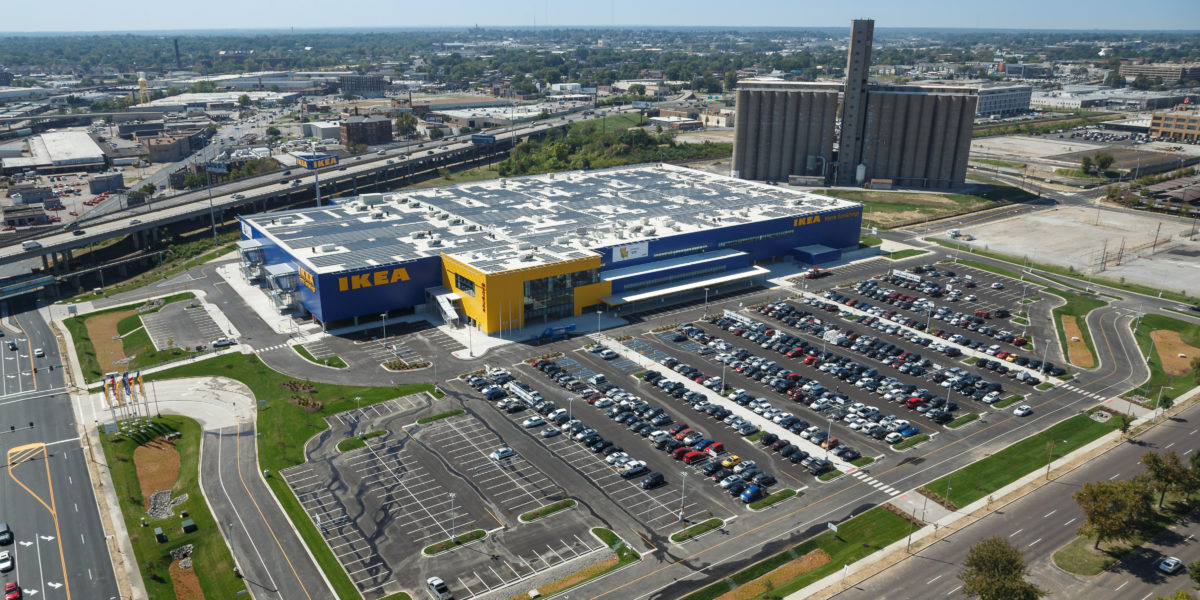As the brand new massive blue Ikea store was being built, many people spoke the Swedish retail giant with excitement. As a furniture retailer, I was concerned. My impression was that the furniture there was cheap, but stylish. I thought it was the Walmart of furniture.
It had been open for several months before I finally made the time to check it out. My wife and I decided that going on a snowy day at opening was our best opportunity to beat the crowds. Even in those conditions the place was packed.
As I walked in, I could tell that my impressions of Ikea were incorrect. There was no comparing it to Walmart and no comparing it to any retailer in our area. It was clear that they put a lot of thought into every detail of the store. There was sharp digital signage welcoming us to the store and a very nice looking babysitting area directly in front of the entrance. The carts were designed with the RTA flat packed products in mind and had a fold down seat for young children to ride. In addition, all 4 wheels on the cart turned allowing maneuvers in tighter spaces.
The elevator that took us to the top floor was larger than most commercial freight elevators. It opened directly to the cafeteria where my family bought breakfast for three for under 5 dollars. There was also a children’s area in the cafeteria that allowed parents to eat in peace. The first thing on the second floor was children’s toys and furniture, a 5 dollar stuffed animal kept our 2 year old busy for the hour and a half we spent inside. This was a welcome juxtaposition from the previous night I had spent chasing him around a furniture retailer while my wife looked at sofas.
The layout was done mostly in vignettes to give buyers an idea of how the furniture would look in a completed room. The showroom was clean and uncluttered and the furniture was well designed. As a furniture professional, it was clear that much of the furniture had cardboard backing and wouldn’t survive a move. As a consumer, it was hard not to get excited. I might have seen two or three Ikea employees the whole time I was there, yet my experience as a customer was good.
The trip motivated me to step up my game as retailer. We have been talking about putting in a play area for kids for the last year to make the trip to our store fun for kids and less stressful for parents. Doing a better job of setting up separate vignettes so clients can get a better idea of how the furniture will look in their offices and making sure we are offering a great experience and spectacular level of service to our clients.
However, it is clear to me that no one is going to out “Ikea” Ikea. In terms of low prices, cool Scandanavian designs and the best selection of single use furniture, they are it. If I were located within 20 miles and selling cheap home furniture for dorm rooms and guest rooms, I would close my doors today. However, I believe Ikea is lacking in 3 major areas. These areas are where the successful companies will differentiate and continue to thrive.
The first and most significant difference maker, is personalized service. The ability to: help clients determine the best fit for their room, their budget and their style, arrange for delivery and installation and making sure the client has a specific person to call if there is an issue, is a big deal to a lot of consumers. This personal service also saves time in that a furniture expert can lead the client to the area and piece of furniture that the client suits the client’s needs, rather than spending 2 hours on a scavenger hunt for the right end table.
The second is the customization of the furniture for the client. Giving clients the ability to pick the finish and upholstery of their furniture is part of the personal touch. Many clients really want to make their space their own and not design around the limited pieces that are available in cheaper lines.
The last difference maker is quality. Selling a product that is meant to last past a single use, allows you to reframe the conversation to be about the true cost of ownership over the lifetime of the product. If the Ikea product lasts half as long or less and requires time and energy to assemble and to dispose of, there is a real case to be made that many pieces of Ikea furniture are truly more expensive over time. This also leads into the conversation about sustainability and environmental impact.
My feeling is that if you are selling on price, you will always lose in the end. If it is small business selling on price that death will probably come sooner rather than later. If not Ikea or Wallmart, Amazon is much better at being the low price leader. Small business needs to focus on adding value to the purchase and filling spaces that are left open by their larger competitors. As a furniture vendor, I am going to lose business to Ikea. We have chosen to focus our efforts on consumers that appreciate the value that we add, understand how we make their lives better, and are willing to pay for our services. Ikea helped us focus on our core business and because of that our little furniture store have over doubled in revenue since late 2015 when Ikea first opened their doors.
